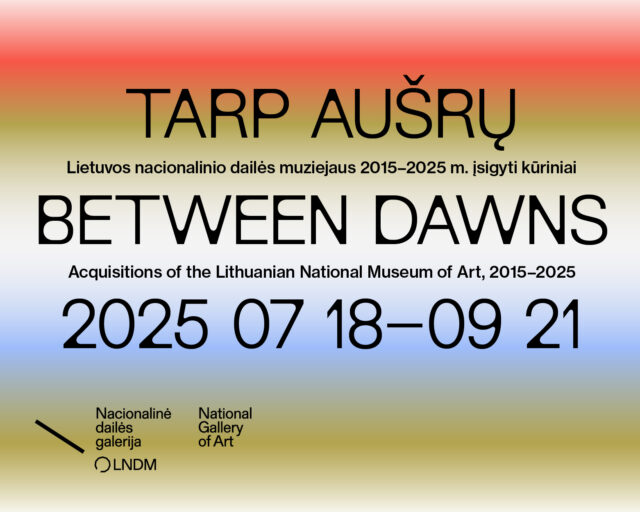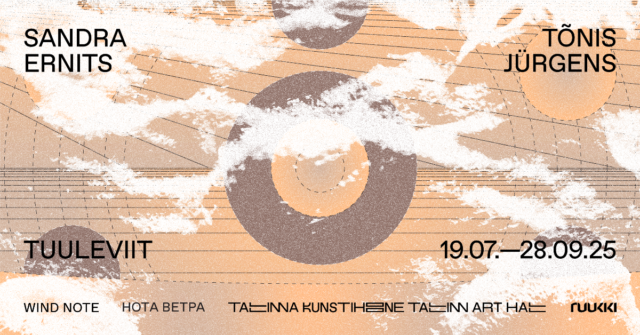Dear Tanel,
I decided to write an exhibition ‘Goodbye, East! Goodbye, Narcissus!’ review in the form of a letter to you as the curator of it; an exhibition that happened at EKKM, Contemporary Art Museum of Estonia, a self-established non-profit initiative that has been operating since late 2006 in an ex-squat in an ancillary building of Tallinn’s former heating plant in north Tallinn.
It was indeed a nice visit to Tallinn! Thanks to the FRAME organisation and to Maria Helen Kand, the curator of EKKM, we got to see Tallinn’s greatest art places and meet the artists together with colleagues from Denmark, Norway, and Finland. My memory of the trip is a little blurry now since it happened at the beginning of May. Nevertheless, a great reminder of your exhibition is the catalogue in red letters and in three languages, Russian, English, and Estonian, that has been lying on my table for quite a while. I read your introductory text before the exhibition, and then again after I came back from the trip.
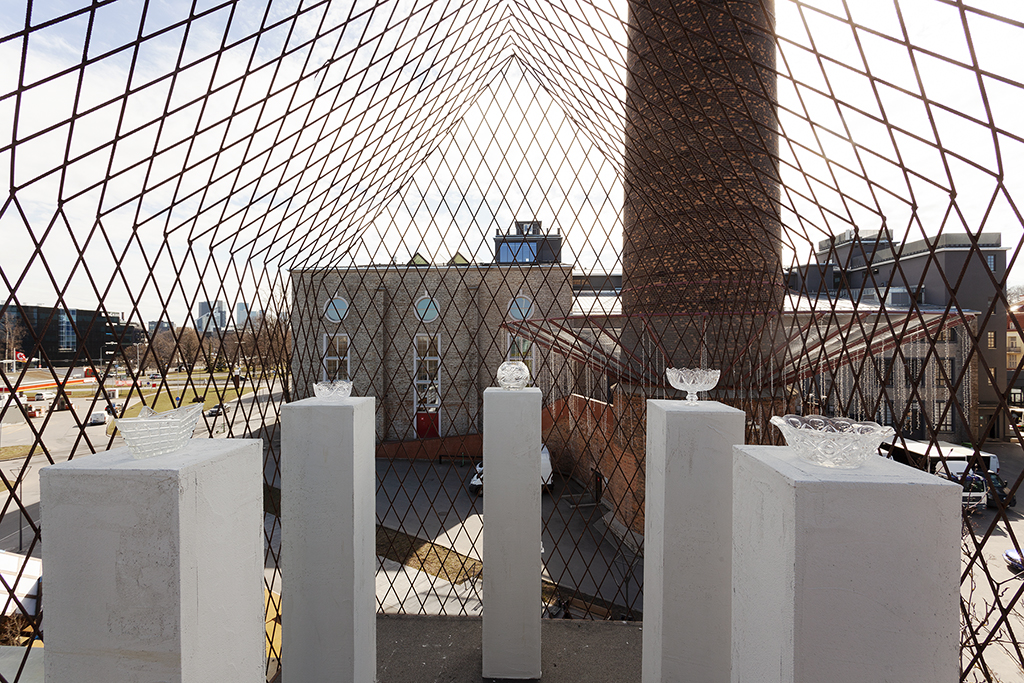 The exhibition ‘Goodbye, East! Goodbye, Narcissus!’ has works by 7 artists. On entering the first exposition hall– a dark room – Ukrainian artist Svitlana Biedarieva greets you with a very straightforward piece Morphology of War depicting people’s figures merged with guns. The drawing style makes you wonder whether it is a copy or a fragment of a Medieval artwork. Having entered, you do not want to go any further, you do not want to walk around – it freezes you in place (it was literally freezing because the museum does not have a heating system). It gives you shivers – as it should.
The exhibition ‘Goodbye, East! Goodbye, Narcissus!’ has works by 7 artists. On entering the first exposition hall– a dark room – Ukrainian artist Svitlana Biedarieva greets you with a very straightforward piece Morphology of War depicting people’s figures merged with guns. The drawing style makes you wonder whether it is a copy or a fragment of a Medieval artwork. Having entered, you do not want to go any further, you do not want to walk around – it freezes you in place (it was literally freezing because the museum does not have a heating system). It gives you shivers – as it should.
I was hesitant to look for more but the video work by Aliaxey Talstou, an artist from Belarus, was playing on the wall in front of Svitlana Biedarieva’s monsters. The sound of smashing the crystal vases in front of the parliament in Minsk enveloped the video work called For Happiness!. The video of the performance carried out in 2016 was well in tune with the surroundings. The performance is based on dictator Lukashenka’s claim that his regime is as strong as a crystal vase. The artist risked his safety and broke the vases in the public space of Belarussia’s capital as a symbolic act of revolution.
The crystalware became almost a symbolic axis of the exhibition. There were several artworks referring to crystalware including a Lithuanian artist Paulina Pukytė who also refers to crystal bowls as ghosts from the past empty inside. In the artist’s words, the crystal bowls represent “abstruse strangers from another cultural paradigm; wanting to be there, but instead only “ghosting”.” [1] The bowls were put on the roof of the building in the metal cage where the panorama view of Tallinn’s intensive urban developments diverts the attention from the enigmatic installation by Paulina Pukytė.
The connection between the political context of Belarus, the works of Talstou and Pukytė, is forced and brutally simplified and makes a rather complicated curatorial decision. In one work the vases are being broken, in the other, the crystal bowls are put on a roof on the white columns. What does the crystalware represent? Can I choose? Is it a figure of speech in the ridiculous statement by the dictator or something very meta, very poetic, even ecstatic?
I started wondering what the crystal glass and vases industry was. I haven’t googled it yet. Who made them and how? Maybe it would be much less fetishisation of them and of their origin if we knew who made them and how. Similarly, I was wondering about Eastern Europe, – which is a huge topic in your conceptualisation of the exhibition, and maybe even your whole practice as a curator.

 In your catalogue you write that you feel responsible for the romanticisation of Eastern Europe as a whole, as a concept.[2] However, I struggled to grasp that moment when exactly the Eastern Europe label was making me proud of it. I wouldn’t call it pride, I would call it a necessity. I think that being from Eastern Europe now has a crucial meaning, especially from the moment the attack on Ukraine started. Exactly now the acknowledgement of this territorial identity makes the Russian invasion much more visible, the analysis of the Russian empire and the state violence more nuanced and relevant.
In your catalogue you write that you feel responsible for the romanticisation of Eastern Europe as a whole, as a concept.[2] However, I struggled to grasp that moment when exactly the Eastern Europe label was making me proud of it. I wouldn’t call it pride, I would call it a necessity. I think that being from Eastern Europe now has a crucial meaning, especially from the moment the attack on Ukraine started. Exactly now the acknowledgement of this territorial identity makes the Russian invasion much more visible, the analysis of the Russian empire and the state violence more nuanced and relevant.
When talking about trauma, Narcissus, and Eastern Europe, I immediately remember Adam Curtis’ documentary Trauma Zone. Have you seen it? It is a huge collection of archive material gathered together in a four-part documentary film where you see the whole map of the Soviet Union breaking into pieces. The camera focuses slowly on Russia from 1985 to 2005. The film helps you understand how Russia became a country or a strange amalgam of looting, hopelessness, and violence. It is such an intense documentary. It does drive you away a bit from the assumption that history can be told easily, and it can be erased, dismantled, and transformed by one small gesture. You leave that idea behind at the door, and you realise that singular trauma does not exist; it is a whole zone, it is a multitude of traumas. The greatness of the documentary is that there is no solution, and it is not Putin alone who made everyone miserable.
 The scariest are the collaborators who hide behind the apparatus of propaganda, the massive extraction of state resources, and looting the of people’s lives at the same time. So I would be careful with crystal vases, shadows, and grand statements about the diagnosed general monstrosity. In your words, if Russians, “a shapeless mass without will, emotion and humanity”[3], had not managed in some mysterious almost Kashpirovskian ways to subdue the mass of Eastern Europe and fill them with “poison”, the collective psyche of Eastern Europe would be seeking truth, love, courage, etc.[4]
The scariest are the collaborators who hide behind the apparatus of propaganda, the massive extraction of state resources, and looting the of people’s lives at the same time. So I would be careful with crystal vases, shadows, and grand statements about the diagnosed general monstrosity. In your words, if Russians, “a shapeless mass without will, emotion and humanity”[3], had not managed in some mysterious almost Kashpirovskian ways to subdue the mass of Eastern Europe and fill them with “poison”, the collective psyche of Eastern Europe would be seeking truth, love, courage, etc.[4]
The kind of fake collectivity (favored a lot by Soviet authorities) seeps in through the curatorial conceptualisation of the exhibition and becomes the unified strange psychoanalytic concept. The generalisation of very complicated history frightens me, the way it frightens me to look at the highly curated exhibitions where the curator presents himself in plurality, and puts himself as a central figure in the exhibition. The problem with political art is that it does not always want to make you think, sometimes it demands your agreement and confirmation, and if you don’t agree it rejects you. In this case, I felt rejected by the curatorial intention to make the exhibition “too political”. I never thought I would ever make such a statement in my life. It is indeed a liberal statement but in the context of the exhibition at EKKM, I think the statement works in the other direction. Here is why.
I wanted to look at the pieces in the exhibition in a detached way, to look into the individual artworks, but I gave up because there was so much of one level subtext. I started to ask myself if you can instrumentalise an artwork to make it speak the way you want even though you haven’t made it, you did not create it but you are placing it bluntly in your own mental space which you call Eastern Europe. It does have a taste of propaganda. With such cruelty, the anti-colonial theme in most of the works loses its interface and its own interpretations.
In your text, you conclude that there is no justification for dividing Europe into East and West anymore, that the division is based only on a 50-year-long historic episode. Well, wasn’t Eastern Europe invented already in the 18th century by Western thinkers of the Enlightenment? And the Russian Empire lasted for two full centuries occupying and meddling in the territories of Eastern Europe. While simplifying the history in order to make the point that the East should be gone I would argue that you let Narcissus appear on the pedestal. Narcissus is clearly amazed by the echo he makes through the emptied vase of history.
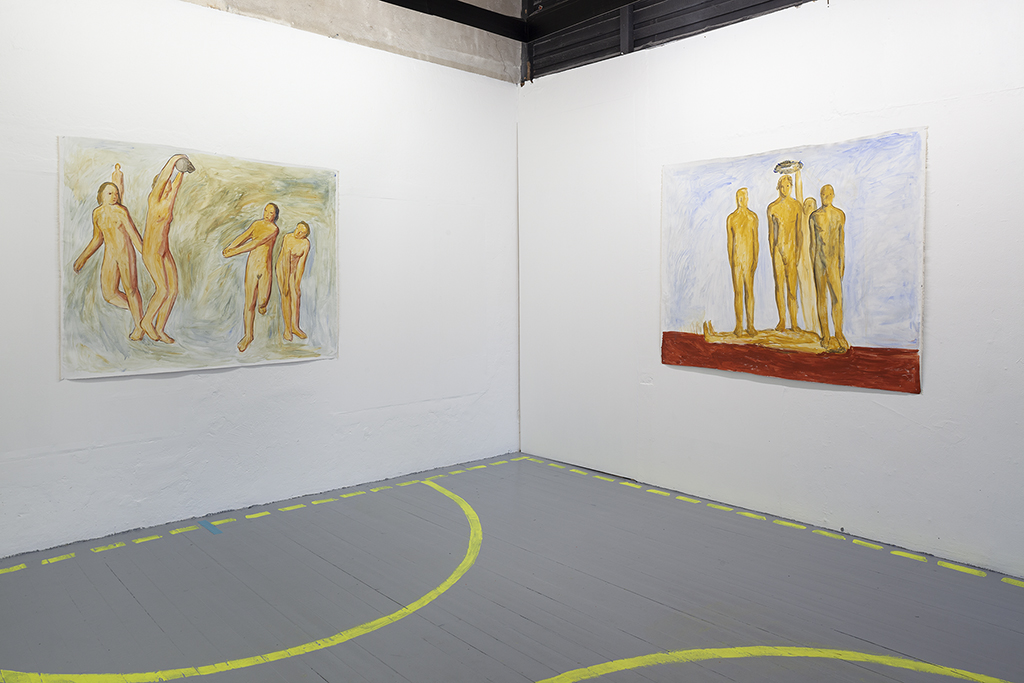 In the other halls in the exhibition, I had a feeling that multiple dimensions of artworks were in a way unwelcome and read from the symbolic narcissistic point of view. If Kateryna Lysovenko’s paintings didn’t have a pressing obligation to fit into the heavy context of the exhibition encompassing crushed, crystal vases and black Soviet toys stuck to the ground, these paintings would be able to speak clearly of repressive powers and violence in their weird mashup of socialist and naive stylised paintings. Maybe the problem is that some works in the exhibition are powerful enough to tell the story on their own but their layers are gone; Narcissus takes it away.
In the other halls in the exhibition, I had a feeling that multiple dimensions of artworks were in a way unwelcome and read from the symbolic narcissistic point of view. If Kateryna Lysovenko’s paintings didn’t have a pressing obligation to fit into the heavy context of the exhibition encompassing crushed, crystal vases and black Soviet toys stuck to the ground, these paintings would be able to speak clearly of repressive powers and violence in their weird mashup of socialist and naive stylised paintings. Maybe the problem is that some works in the exhibition are powerful enough to tell the story on their own but their layers are gone; Narcissus takes it away.
In other words, the works in the exhibition spoke to me autonomously, with their own voice. There wasn’t any point in making them stand in one line with the others. For example, the piece Crops for the State by Holger Loodus talks about the process of demystification where state propaganda is uncovered by a little sparrow character. The artist exhibits the painting within the frame of a 1953 Socialist Realism painting by the Estonian painter Viktor Karrus. The painting depicts the animated character of a sparrow in a sort of prison cell but with a mountain of golden crops symbolising prosperity and justice surrounded by cold prison walls. It is clever, but in the context of the exhibition, it works only as a narrow reference to the evil past which, in your words, we, the worms of Eastern Europe, are still defined by and sort of obsessed with.
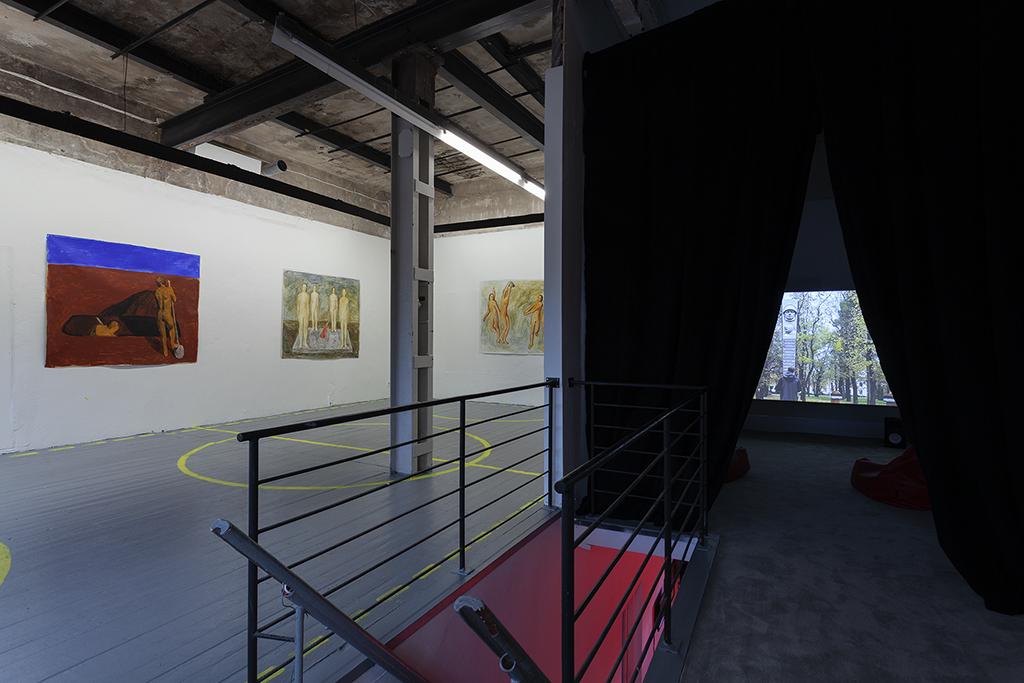 Meanwhile, the painting by Holger Loodus reminded me of the Walt Disney character Scrooge who was an incredibly rich business magnate and self-proclaimed venture capitalist whose dominant character traits were his wealth, meanness, and the desire to seek more money through adventures and treasure hunting. Do you remember him? I used to watch it as a kid but it had Russian subtitles. Since I grew up in the Nineties I cannot escape the parallel between Scrooge and the Sparrow, Walt Disney and Soviet animation. Should I refuse my own memories of the Eastern European Nineties to become a pure subject who in your words is ‘capable of creating an inner emotional capacity to seek truth, love, integrity and tolerance’ beyond the inherited history?
Meanwhile, the painting by Holger Loodus reminded me of the Walt Disney character Scrooge who was an incredibly rich business magnate and self-proclaimed venture capitalist whose dominant character traits were his wealth, meanness, and the desire to seek more money through adventures and treasure hunting. Do you remember him? I used to watch it as a kid but it had Russian subtitles. Since I grew up in the Nineties I cannot escape the parallel between Scrooge and the Sparrow, Walt Disney and Soviet animation. Should I refuse my own memories of the Eastern European Nineties to become a pure subject who in your words is ‘capable of creating an inner emotional capacity to seek truth, love, integrity and tolerance’ beyond the inherited history?
What is a pure subject anyway? Could it be one without trauma, narcissism or history? Could it be that a pure subject doesn’t exist? The exhibition ‘Goodbye, East! Goodbye, Narcissus!’ refuses to believe in the disharmony of complicated histories and historical materialist interventions and consequences to our processes of being. It makes you hate yourself, every bit of your history and yet it forgets that there are varieties of hate and varieties of hope. There is no one way to look at history; therefore, it can be simultaneously entertaining, suffocating, and interesting. It doesn’t have to be only suffocating.
Sincerely,
Agnė Bagdžiūnaitė
[1]Paulina Pukyte “Ghosts” in Goodbye, East! Goodbye, Narcissus!, Contemporary Art Museum of Estonia, Lemon Print, 2023, p.106.
[2] Tanel Rander, “Goodbye, East! Goodbye, Narcissus!” in Goodbye, East! Goodbye, Narcissus!, Contemporary Art Museum of Estonia, Lemon Print, 2023, p. 81.
[3] Ibid., p. 85.
[4] Ibid., p. 89.
Photography: Paul Kuimet, Annika Haas
Photo reportage from the exhibition ‘Goodbye, East! Goodbye, Narcissus!’ at EKKM














